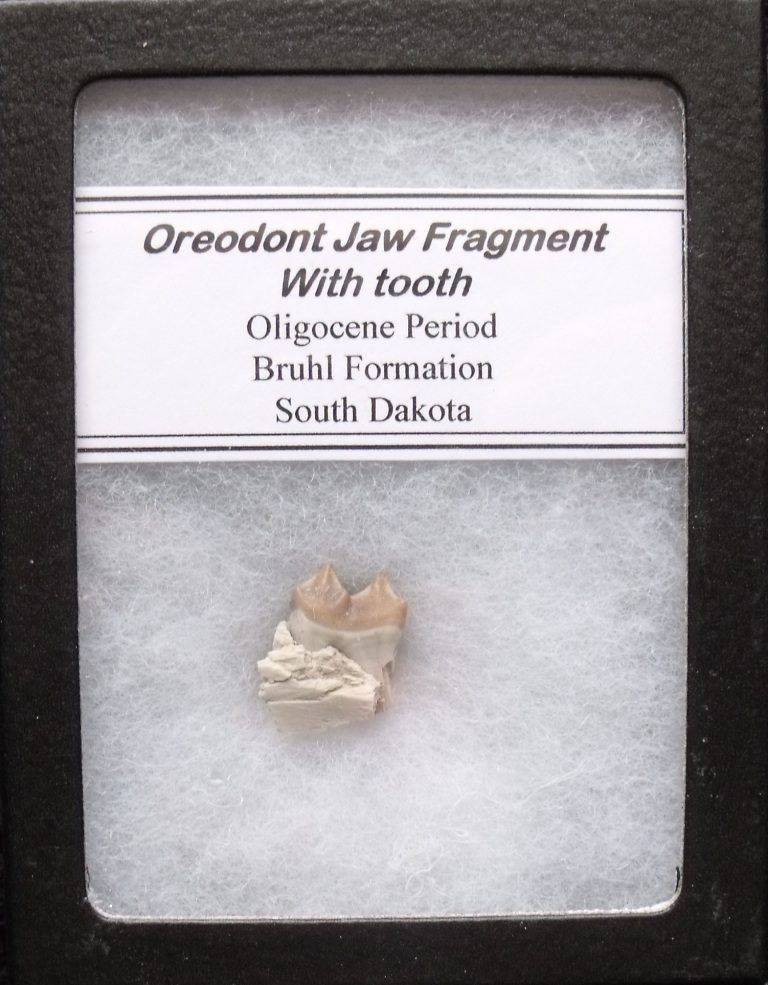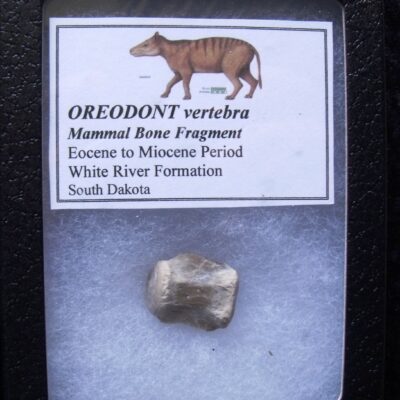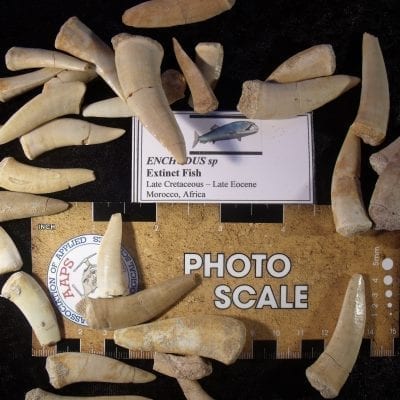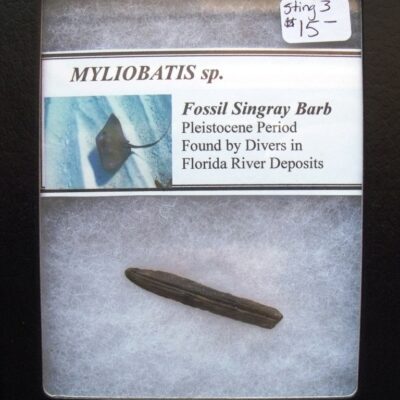Description
Oreodont Tooth
These animals are part of a very diverse group of extinct herbivorous, plant eaters in North America about 30 to 33 Million Years ago. They are artiodactyls which means even-toed ungulates. An Ungulate means – hoof toed mammal.
This is an Oreodont Tooth and a small piece of jaw Section. Oreodont means “mountain tooth” because of the unique shape of the molars. Most oreodonts were about the size of sheep but some grew to a size of a cow. They were fairly heavy-bodied and had short four-toed hooves. Oreodonts are extinct and have no close relatives but are most closely related to camels and pigs. All Oreodonts are herbivorous and believed to browse on leaves and young shoots.
The most common Oreodont is arguably the Merycoidodon this is because Merycoidodon means ruminating teeth. Again these were herbivores browsing on low vegetation. But they are found mostly in the Bruhl Formation which is a part of the famous White River Formation. The Bruhl is aged between 33 and 30 million years ago and encompasses parts of North Dakota, South Dakota, and Wyoming.
The fossils from there are generally white n color because of the type of mineralization. The fossils are very brittle and care must be taken to remove them from rock. Sometimes the fossils are just laying on the surface because of erosion.
Because of the sheer number of fossils found it is believed that they wandered the area in large herds. This Oreodont Tooth was found just by itself. Often the bones are found dis-articulated and broken apart, it is uncommon to find a complete skeleton. That is the case with this bone. It was found on the surface.
The Oreodont tooth is 1/2 inch and comes in this handsome inch 3 1/4 inch by 4 1/4 black leatherette, glass – topped collectors case.




